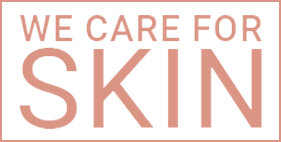Acne-prone skin requires a lot of consideration and targeted skincare regimen to manage and prevent breakouts, and promote overall skin health. Creating the best skincare for acne prone skin could be a challenge especially now that the market is flooded with products and treatment options. The thing about acne is that there is no cure-all solution or a one-size-fits-all approach. Different skin types require different skincare regimens.
This highlights the importance of consulting with dermatologists when it comes to dealing with acne. Sure, you can do your own research and create a regimen that works for you, but having an expert monitor and evaluate your progress could make a lot of difference.
Understanding Acne
Before delving into creating the best skincare for acne prone skin, we first need to have a better understanding about acne and what makes your skin an acne-prone skin. It is essential to know the underlying factors contributing to acne.
Acne primarily occurs due to the overproduction of sebum, clogged pores, bacterial overgrowth, and inflammation. Overproduction of sebum could be triggered by a number of factors but mainly due to hormonal changes during puberty, menstrual cycle, pregnancy, and menopause. Other factors that could contribute to acne include genetics, stress, lifestyle, and medications among many others. Tailoring a skincare regimen to target these factors is crucial for managing and preventing acne.
Consultation: The First Step
Tip #1: Consult with a board-certified dermatologist
Before starting any skincare treatment, especially for acne-prone skin, consulting a board-certified dermatologist is paramount. They know more about the skin and skin problems than anyone else. They are qualified to conduct thorough examination, identify specific acne triggers, and tailor your treatment plan based on your specific needs. This personalized approach ensures that the skincare regimen you get will address your individual needs and minimizes the risk of adverse reactions.
Some might think that this is unnecessary and just an additional cost, but if you think about it, that extra consultation fee you will spend can save you from trying out multiple products and additional expense due to adverse reactions from the products you will be using.
Cleansing: The Cornerstone of Acne Care
Tip #2: Cleanse twice a day
Cleansing your face is the foundation to the best skincare for acne prone skin. Washing your face when you wake up in the morning and before going to bed at night, is recommended. It is also advisable to wash your face after engaging in activities that make you particularly sweaty, otherwise, overwashing your face can do more harm than good.
Tip #3: Use a gentle cleanser
Choose a gentle cleanser to remove impurities without stripping the skin of its natural oils. Harsh cleansers can exacerbate acne by triggering excess oil production. Look for sulfate-free and non-comedogenic cleansers containing ingredients like salicylic acid or benzoyl peroxide to address acne concerns.
Tip #4: Double cleanse if needed
Double cleansing has been gaining popularity lately and it's for good reasons. It can be particularly helpful for acne-prone skin when done right. Double cleansing involves using an oil-based cleanser first to get rid of oil-based impurities like makeup and sunscreen. This is followed by a water-based cleanser to remove deep-seated dirt and sweat.
This technique can give a more thorough cleanse without compromising the skin's barrier function. It also enhances absorption of other skincare products. Kiehl’s Midnight Recovery Botanical Cleansing Oil, Dear Klairs Gentle Black Fresh Cleansing Oil, and the locally-made Human Nature Gentle Cleansing Oil are great options when looking for oil-based cleansers.
Exfoliate: Shedding the Problem Away
Tip #5: Incorporate exfoliation into your routine
Incorporating exfoliation into your routine helps unclog pores and prevent breakouts. Beta hydroxy acids (BHAs), such as salicylic acid, are particularly effective for acne-prone skin. Salicylic acid exfoliates the skin, removing dead skin cells and preventing breakouts, as well as helping to reduce the appearance of acne scars.
Alpha hydroxy acids (AHAs) like glycolic acid, kojic acid, and mandelic acid, can be included to improve skin texture and promote cell turnover. However, those with sensitive skin should exercise caution, as AHAs can potentially cause irritation. Patch testing is recommended before incorporating AHAs into your routine.
Tip #6: Avoid physical exfoliators
Physical exfoliators such as scrubs and face towels are definitely a big no when it comes to acne-prone skin. They can damage the skin barrier, irritate the skin further, and lead to more breakouts, redness, inflammation, and uneven skin texture and tone.
Treatment: Targeting the Problem
Tip #7: Over-the-counter treatments can be a cheap but effective option
Incorporating over-the-counter treatments like benzoyl peroxide (BPO) into your routine, such as a spot treatment, can help control acne. BPO works by helping dry out existing pimples and killing acne-causing bacteria. Salicylic acid is also a viable option for topical acne treatment. It is available as gel, lotion, and leave-on solutions.
Tip #8: Be cautious when using topical and systemic retinoids
Retinoids, whether topical or systemic, are a mainstay in acne treatment. The best skincare for acne prone skin and regimens out there will surely have a retinoid incorporated in it. Topical retinoids, like adapalene or tretinoin, are valuable additions to an acne skincare regimen. They promote cell turnover, preventing the formation of comedones and reducing inflammation
Systemic retinoids like isotretinoin are highly effective options for acne treatment but should only be taken under the supervision of a dermatologist. As effective as it is, it can come with a number of side effects and proper evaluation and monitoring is needed before and during treatment.
You should also be cautious when looking for isotretinoin brands to purchase since these medications are vulnerable to counterfeits. Look for FDA-approved brands such as Acnetrex. Purchase only from trusted sources such as drugstores and board-certfied dermatologists--never buy online as this type of treatments require guidance from medical practitioners.
Tip #9: Never self-medicate with antibiotics and hormonal therapies
Antibiotics may also be incorporated in acne treatment regimens. Similar to systemic retinoids, they should never be taken without a prescription and supervision of a
dermatologist. Certain antibiotics cannot be used in conjunction with other medications or treatments, thus, the need to disclose to your dermatologist any underlying conditions or medications and supplements you are taking.
Similarly, hormone therapies are also used in certain cases where it is necessary. We are talking medications that can alter hormone levels in your body, so you should never attempt to self-medicate using them.
When prescribed with these medications, it is important to follow up and have regular check-ups with your dermatologist so they can monitor your progress and adjust anything if needed.
Moisturize: Maintaining Hydration Levels
Tip #10: Use non-comedogenic moisturizers
Hydration is essential for all skin types, even acne-prone skin. Dermatologists recommend the use of non-comedogenic moisturizers to maintain skin hydration without clogging pores. Choosing a product that suits individual skin needs is crucial for preventing excessive dryness or oiliness. Using a moisturizer after applying medicated treatments can also help tolerate these medications as they are typically drying.
Tip #11: Look for beneficial ingredients
Hyaluronic acid, known for its hydrating properties, is a dermatologist-recommended ingredient for acne-prone skin. Its lightweight consistency ensures hydration without causing breakouts, making it a suitable choice for those with acne concerns.
Moisturizers containing essential ceramides like CeraVe are also a great option for a moisturizer. They help strengthen the skin barrier function and are beneficial for all skin types - from oily, dry, to normal, combination, and sensitive skin.
Sun Protection: Shielding the Skin
Tip #12: Sunscreens and sunblocks are your friend
Dermatologists always emphasize the importance of sun protection in acne management. UV exposure has been shown to worsen inflammation and hinder the healing process. Dermatologists recommend daily application of a broad-spectrum sunscreen with a minimum SPF of 30, specifically tailored for acne-prone skin.
Individuals with sensitive skin may benefit from mineral sunscreens containing zinc oxide or titanium dioxide. Dermatologists often recommend these formulations for their gentle yet effective protection against harmful UV rays.
Hygiene, Lifestyle, and Other Tips
Tip #13: Maintain proper hygiene
Although they are not necessarily part of a skincare routine there are some unspoken rules when it comes to acne treatments and regimens. This includes always washing your hands before touching your face, not picking at your pimples, changing your pillowcases often, and cleaning your makeup brushes and sponges when needed.
Tip #14: Exercise and eat healthy
Regular physical activity, combined with a nutritious diet, can positively influence hormonal balance, support detoxification, enhance immune function, and contribute to overall skin health. However, individual responses may vary, highlighting the importance of consulting with dermatologists, nutritionists, and fitness professionals for personalized guidance. By adopting a comprehensive approach that addresses both internal and external factors, you can maximize your efforts in treating and preventing acne, and promoting long-term skin health.
Tip #15: Build a good relationship with your dermatologist
Regular follow-up and appointments with your dermatologist are crucial for assessing the progress of the skincare regimen and making necessary adjustments. Dermatologists can modify treatment plans based on individual responses, ensuring ongoing efficacy and minimizing the risk of side effects.
Consistency is the Key
Creating the best skincare for acne-prone skin involves a multidimensional approach that considers individual needs and skin characteristics. Consulting a dermatologist is the cornerstone of an effective acne management plan, ensuring personalized care and professional guidance. From cleansers and exfoliants to hydration, treatment, and sun protection, each step in the skincare routine should be carefully curated with the assistance of a dermatologist. By combining expert advice with reliable sources, you can achieve clearer, healthier skin and better long-term outcomes.
References
-
American Academy of Dermatology [AAD]. (2019). Acne: Diagnosis, treatment, and outcome. From https://www.aad.org/public/diseases/acne/diagnosis-treatment
-
Del Rosso J. Q. (2013). The role of skin care as an integral component in the management of acne vulgaris: part 1: the importance of cleanser and moisturizer ingredients, design, and product selection. The Journal of Clinical and Aesthetic Dermatology, 6(12), 19–27.
-
Draelos Z. D. (2006). The effect of a daily facial cleanser for normal to oily skin on the skin barrier of subjects with acne. Cutis, 78(1 Suppl), 34–40.
-
Farwick, M., et al. (2011). Bioactive tetrapeptide GEKG boosts extracellular matrix formation: in vitro and in vivo molecular and clinical proof. Experimental Dermatology, 20(7), 602–604. https://doi.org/10.1111/j.1600-0625.2011.01307.x
-
Kornhauser, A., Coelho, S. G., & Hearing, V. J. (2010). Applications of hydroxy acids: classification, mechanisms, and photoactivity. Clinical, Cosmetic and Investigational Dermatology, 3, 135–142. https://doi.org/10.2147/CCID.S9042
-
Nohynek, G. J., Dufour, E. K., & Roberts, M. S. (2008). Nanotechnology, cosmetics and the skin: is there a health risk?. Skin Pharmacology and Physiology, 21(3), 136–149. https://doi.org/10.1159/000131078
-
Rawlings A. V. (2006). Ethnic skin types: are there differences in skin structure and function?. International Journal of Cosmetic Science, 28(2), 79–93. https://doi.org/10.1111/j.1467-2494.2006.00302.x
-
Tan, A. U., Schlosser, B. J., & Paller, A. S. (2017). A review of diagnosis and treatment of acne in adult female patients. International Journal of Women's Dermatology, 4(2), 56–71. https://doi.org/10.1016/j.ijwd.2017.10.006
-
Thiboutot, D., et al… Global Alliance to Improve Outcomes in Acne. (2009). New insights into the management of acne: an update from the Global Alliance to Improve Outcomes in Acne group. Journal of the American Academy of Dermatology, 60(5 Suppl), S1–S50. https://doi.org/10.1016/j.jaad.2009.01.019
Article Reviewed by: Dr. Mary Amy Fatima Cagayan Chua


